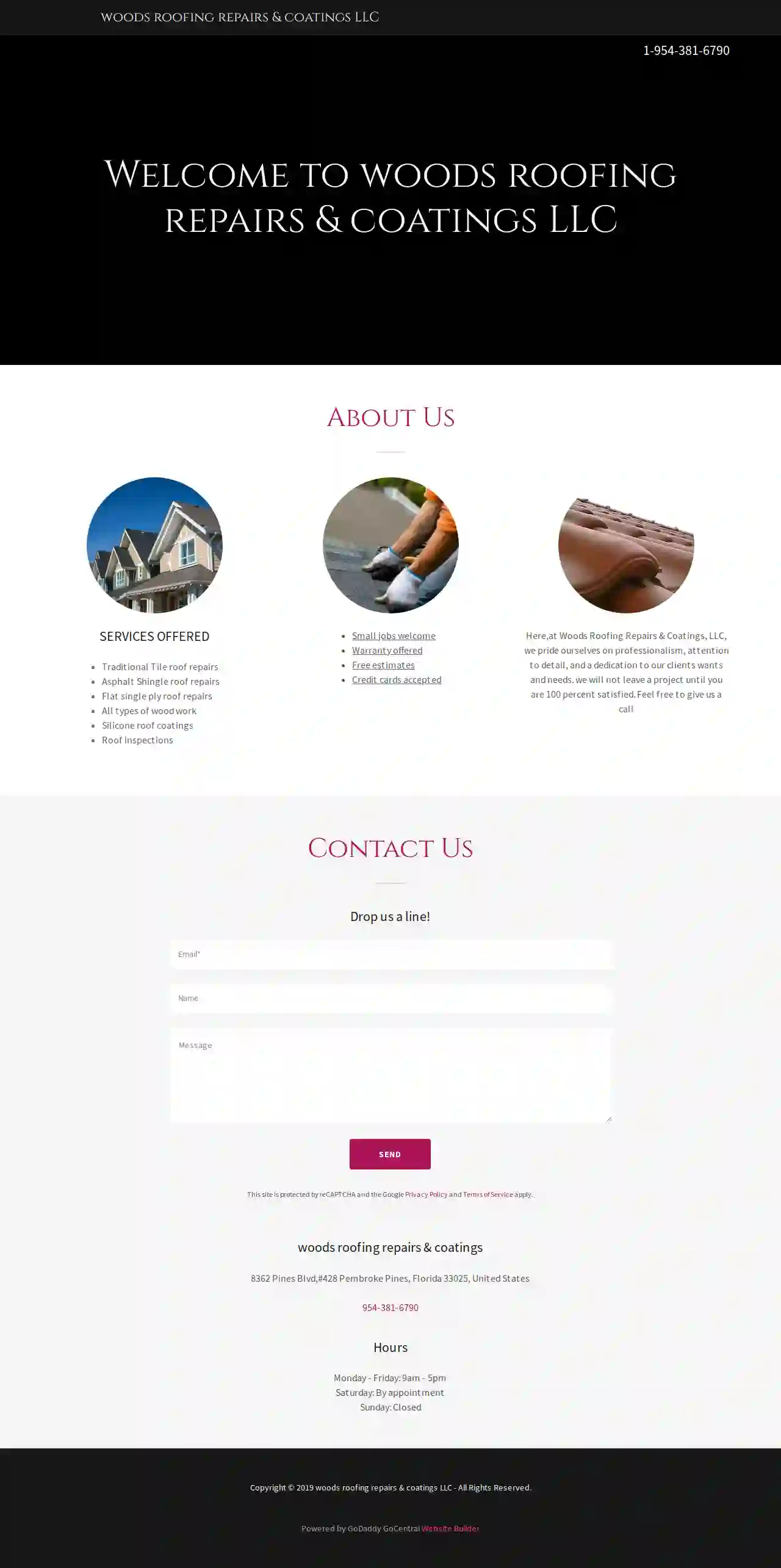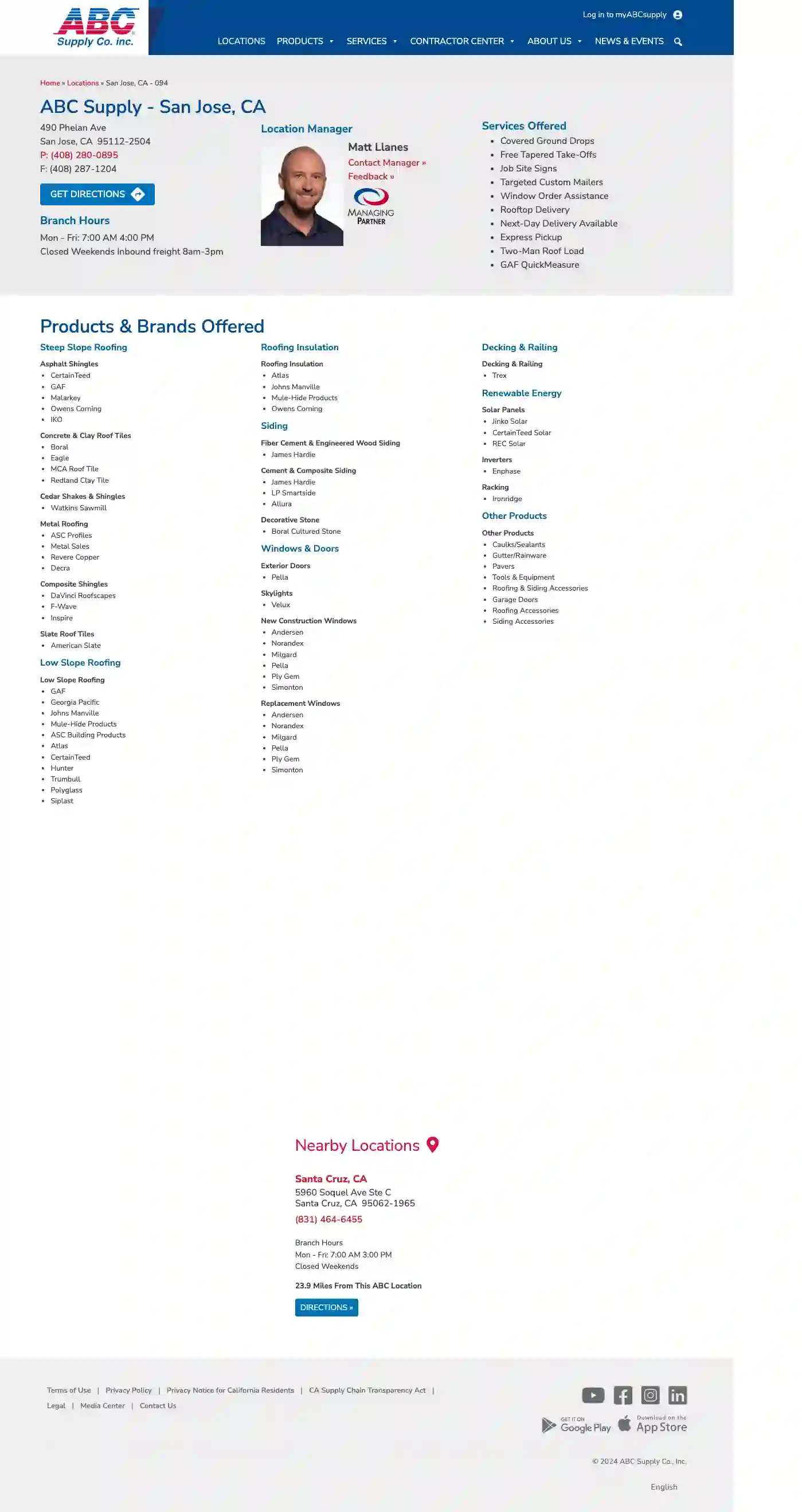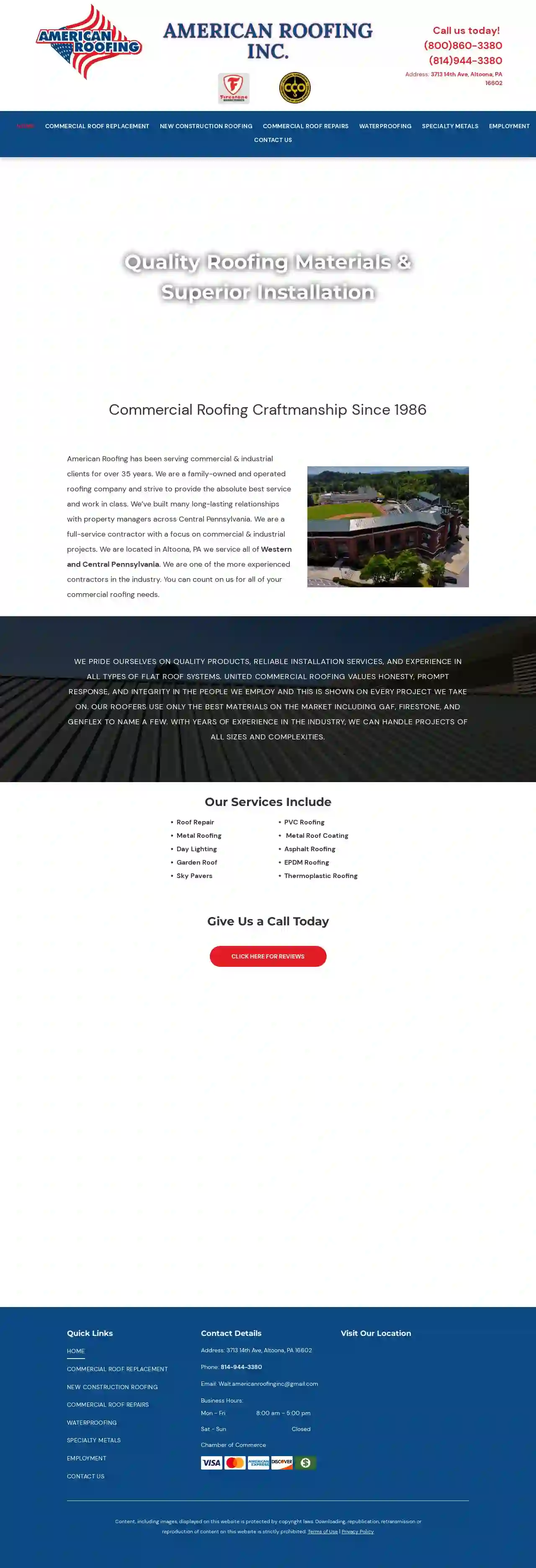Roofing Companies Wyomissing
Top Roofing Company in Wyomissing
Receive up to 3 Roofing Service quotes for your project today! Compare profiles, reviews, accreditations, portfolio, etc... and choose the best deal.

Nick Letters Home Improvements LLC.
534 reviews10101 Manchester Rd, Suite 100, St. Louis, 63124, USNick Letters Roofing is a family-owned and operated roofing company serving the greater St. Louis area. We are fully licensed and insured, and we have over 20 years of experience in the roofing industry. We specialize in all types of roofing services, including new roof installations, roof repairs, and roof replacements. We also offer a variety of other services, such as gutter cleaning and skylight installation. We are committed to providing our customers with the highest quality workmanship and customer service. We are a GAF Master Elite Contractor, which means that we have met the highest standards of excellence in the roofing industry. We are also a member of the National Roofing Contractors Association. We are proud to be a trusted name in the St. Louis roofing industry. Our team of experienced roofers is dedicated to providing our customers with the best possible service. We are always available to answer your questions and to provide you with a free estimate. We are confident that we can meet your roofing needs.
- Services
- Why Us?
- Accreditations
- Our Team
- Testimonials
Get Quote
Impriano Roofing & Siding Inc.
522 reviews220 Farm Lane, Doylestown, 18901, USImpriano Roofing and Siding has been local homeowners’ trusted partner in exterior home remodeling since 1973. From our locations in Berwyn and throughout southeast Pennsylvania, we offer exceptional solutions for roofing, siding, windows, doors, storm restoration, and more. With our advanced credentials, including an A+ rating from the Better Business Bureau and elite manufacturer certifications, we deliver top-quality craftsmanship using products from industry-leading brands. Choose us for your next home improvement project and rest easy knowing you’ll receive the best value from the area’s leading exterior remodeling experts.
- Services
- Why Us?
- Accreditations
- Gallery
Get Quote
Oaks Roofing and Siding
525 reviews925 Exchange St, Rochester, 14608, USOaks Roofing & Siding is your premier choice for roofing, siding, home service solutions and more. We proudly serve residents and businesses throughout the Northeast, including Western New York, Ohio, and Pennsylvania. We believe your home deserves the very best roofing services. That’s why at Oaks Roofing and Siding, we take a personalized approach to every job, working alongside customers to offer roof solutions that are affordable and built to last. We ensure your roof is repaired or replaced in a timely manner using the best materials and warranties on the market.
- Services
- Why Us?
- Gallery
Get Quote
Certitude Roofing and Siding
4.9231 reviews18 E Lancaster Ave, Malvern, 19355, USCertitude Home Improvements is a locally-owned and operated family company. We are one of the fastest-growing home improvement businesses in the area, and we can’t wait to bring our quality standards and best practices to your house! Read More The longer you wait to complete necessary roof replacements and other home exterior repairs, the more problems you will have to tackle in the long run. Save yourself the extra hassle and cost by acting now. Keep your home and family safe and secure well into the future. All our projects come with a Lifetime Workmanship Warranty.
- Services
- Why Us?
- Accreditations
- Our Team
- Testimonials
- Gallery
Get Quote
Industrial Roofing Contractors
4.634 reviewsPhiladelphia, PA, 2251 Fraley St, 19137, USA Full Service Philadelphia Roofing Contractor No Job is Too Small or Too Big. N We are flat roofing experts N Best prices in the industry N Fast scheduling — get an estimate in 24 hours! Schedule Free Estimate A Trusted Local Roofing Company Serving Philadelphia & Delaware County Here at Industrial Roofing Contractors, we’ve built our company and reputation as experts in the roofing industry with years of high quality repair, replacement, and maintenance work. We are one of the top rated roofing companies in Philadelphia with the experience and client satisfaction to back it up. We believe in our work and take pride in every project we take on. You become family when you work with us. We use only the best roofing materials available on the market and treat every roof as if it were our own. Our company is built on our reputation for customer service, outstanding standards of excellence, and attention to every last detail. Large or small, residential or commercial, we are absolutely committed to quality, integrity, and absolute perfection. Schedule Your Free Roof Estimate Book an appointment Our Services Residential Roofing We help homeowners with all of their residential and home roofing needs. From roofing repairs to replacements, our experts are here to help. Commercial Roofing We’re a trusted commercial roofing contractor for high-performance roofing solutions that will last well into the future. Industrial Roofing There is no roofing system we can’t do! We think outside of the box and devise custom solutions to fit your needs for any industrial roofing job. Roof Repair Experiencing leaks or damage? Call us immediately to get a free roof repair inspection so you know exactly what your roofing requirements are. Roof Coatings Coating your roof can reduce heat energy costs and increase UV and waterproofing protection for the roof. Extend your roof’s life with our professional coatings. Roof Replacement Is your roof aged and needs to be replaced? We’ll outline the best course of action when it come’s to replacing your roof. Why Home & Business Owners Choose Us R The Leading Local & Family Owned Roofing Business in Philadelphia, PA Roofing in Philadelphia can be overwhelming since there are such a variety of roofing types and roofing materials to choose from: asphalt roofs, flat roofs, tile roofs, metal roofs, and even more for commercial projects. Because of our experience doing so many residential and commercial roofing jobs over the years throughout the
- Services
- Why Us?
- Gallery
Get Quote
EAS Roofing
4.6302 reviewsGlenshaw, PA, 1201 William Flynn Highway, 15116, USPittsburgh’s First Choice for Award-Winning Roofing Services EAS Roofing provides high-performance products and flawless results for your roofing or storm restoration project. Lock In Your Price for 6 Months! For a limited time, lock in your price for 6 months when you put down a $2,000 deposit. Get Started Now EAS Roofing insists on the best for the Pittsburgh area homeowners who trust us with their roofing projects. That’s why we only use premium materials, and hire only home remodeling professionals whom we know will deliver excellent craftsmanship. Enjoy beautiful, durable results—guaranteed—when you choose EAS Roofing! Click To Play See all the great work we have done in the Pittsburgh area! View Projects Roofing Gutters Skylights Storm Restoration Roofing Some roofing companies use subpar materials, but we only install premium products that we are confident will provide exceptional, durable results. Learn More get a quote
- Services
- Why Us?
- Our Team
- Testimonials
- Gallery
Get Quote
woods roofing repairs & coatings
51 reviews8362 Pines Blvd, #428, Pembroke Pines, 33025, USHere, at Woods Roofing Repairs & Coatings, LLC, we pride ourselves on professionalism, attention to detail, and a dedication to our clients' wants and needs. We will not leave a project until you are 100 percent satisfied.
- Services
- Why Us?
- Gallery
Get Quote
ABC Supply Co. Inc.
4.619 reviews10000 W. Capitol Drive, Milwaukee, WI, 53204, USABC Supply is a leading distributor of roofing, siding, windows, doors, and other building materials. With a nationwide network of branches, ABC Supply provides contractors and homeowners with a wide selection of high-quality products and expert advice. The company is committed to delivering exceptional customer service and building lasting relationships with its customers.
- Services
- Why Us?
- Accreditations
- Our Team
- Testimonials
- Gallery
Get Quote
Peak Roofing & Siding Co.
3.65 reviews4116 Princeton Ave, Philadelphia, 19135, USPeak Roofing & Siding Co. has been providing residential and commercial roofing and siding services throughout the entire Philadelphia Tri-State Area for over 12 years. Our service area extends to Philadelphia, Bucks County, Montgomery County, Burlington County, Camden County, New Jersey, Delaware, and surrounding areas. Our team of roofing professionals are fully licensed and insured. At Peak Roofing, we offer a comprehensive range of services, including roof installation, roof repairs, roof maintenance, and siding. We prioritize using the highest quality materials for all our projects, such as slate roofing, shingle roofing, tile roofing, metal roofs, rubber roofing, vinyl siding, and white top roofing. We believe in providing honest and transparent service, never recommending unnecessary services. Sometimes, a simple roof maintenance solution like a seal coat or silver coat is sufficient. However, when a full roof replacement or installation is required, Peak Roofing excels at delivering top-quality roofing services at competitive prices throughout the Philadelphia Tri-State Area. All our roofs are fully insured with top-of-the-line roofing warranties, ranging up to 20+ years. Peak Roofing & Siding has built a reputation for excellence, integrity, quality, and affordability in the Philadelphia roofing industry and surrounding areas. We are a family-owned and operated business, with a lifelong connection to Philadelphia. We care about our community and its residents. Choose Peak Roofing & Siding because we care. Contact us today at 215-758-5021 for a free quote with no hidden overage costs. Our quoted prices are final, with zero overage charges.
- Services
- Why Us?
- Accreditations
- Our Team
- Testimonials
- Gallery
Get Quote
American Roofing Inc.
4.36 reviews3713 14th Ave, Altoona, 16602, USAmerican Roofing Inc. is a family-owned and operated roofing company that has been serving commercial and industrial clients for over 35 years. We pride ourselves on quality products, reliable installation services, and experience in all types of flat roof systems. We use only the best materials on the market, including GAF, Firestone, and Genflex, and have built many long-lasting relationships with property managers across Central Pennsylvania. We are a full-service contractor with a focus on commercial and industrial projects, and are located in Altoona, PA, serving all of Western and Central Pennsylvania. We are one of the more experienced contractors in the industry, and you can count on us for all of your commercial roofing needs.
- Services
- Why Us?
- Accreditations
- Gallery
Get Quote
Over 17,196+ Roofers registered
Our roofing pros operate in Wyomissing & surroundings!
Roofyng.com has curated and vetted Top Roofers in Wyomissing. Find a top & trustworthy pro today.
Frequently Asked Questions About Roofing Companies
- Asphalt Shingles: 20-30 years
- Metal Roofing: 40-70 years
- Tile Roofing: 50-100 years or more (clay and slate)
- Flat Roofing: 15-30 years (depending on material)
- Slate: 100 years or more
- Wood Shakes or Shingles: 30-50 years (with proper maintenance)
- Experience: Companies with a solid track record and years of experience in the industry.
- Licensing and Insurance: Verify they are properly licensed to operate in your area and carry adequate insurance to protect you from liability.
- Certifications: Look for certifications from reputable organizations, demonstrating expertise in specific roofing materials or techniques.
- Positive Reviews: Check online reviews and testimonials from previous customers.
- Professionalism: Choose a company that communicates clearly, provides detailed estimates, and has a courteous and responsive team.
- Age: If your roof is nearing or exceeding its expected lifespan, it's wise to consider replacement.
- Multiple Leaks: Several leaks or leaks that reappear after repairs suggest a widespread problem.
- Extensive Damage: Large areas of damaged, missing, or deteriorated roofing materials might be too costly or difficult to repair effectively.
- Sagging or Structural Issues: Sagging, deflection, or other structural issues indicate a compromised roof that needs replacement.
- Granule Loss (Asphalt Shingles): Significant granule loss indicates weathering and reduced protection.
- Curling or Buckling Shingles: Signifies age or improper ventilation.
- Increased Energy Bills: A poorly insulated roof can lead to higher heating and cooling costs.
What is a roof valley, and why is it important?
How long does a roof typically last?
How do I find a good roofing company?
What are the signs that my roof needs to be replaced?
What is a roof valley, and why is it important?
How long does a roof typically last?
- Asphalt Shingles: 20-30 years
- Metal Roofing: 40-70 years
- Tile Roofing: 50-100 years or more (clay and slate)
- Flat Roofing: 15-30 years (depending on material)
- Slate: 100 years or more
- Wood Shakes or Shingles: 30-50 years (with proper maintenance)
How do I find a good roofing company?
- Experience: Companies with a solid track record and years of experience in the industry.
- Licensing and Insurance: Verify they are properly licensed to operate in your area and carry adequate insurance to protect you from liability.
- Certifications: Look for certifications from reputable organizations, demonstrating expertise in specific roofing materials or techniques.
- Positive Reviews: Check online reviews and testimonials from previous customers.
- Professionalism: Choose a company that communicates clearly, provides detailed estimates, and has a courteous and responsive team.
What are the signs that my roof needs to be replaced?
- Age: If your roof is nearing or exceeding its expected lifespan, it's wise to consider replacement.
- Multiple Leaks: Several leaks or leaks that reappear after repairs suggest a widespread problem.
- Extensive Damage: Large areas of damaged, missing, or deteriorated roofing materials might be too costly or difficult to repair effectively.
- Sagging or Structural Issues: Sagging, deflection, or other structural issues indicate a compromised roof that needs replacement.
- Granule Loss (Asphalt Shingles): Significant granule loss indicates weathering and reduced protection.
- Curling or Buckling Shingles: Signifies age or improper ventilation.
- Increased Energy Bills: A poorly insulated roof can lead to higher heating and cooling costs.